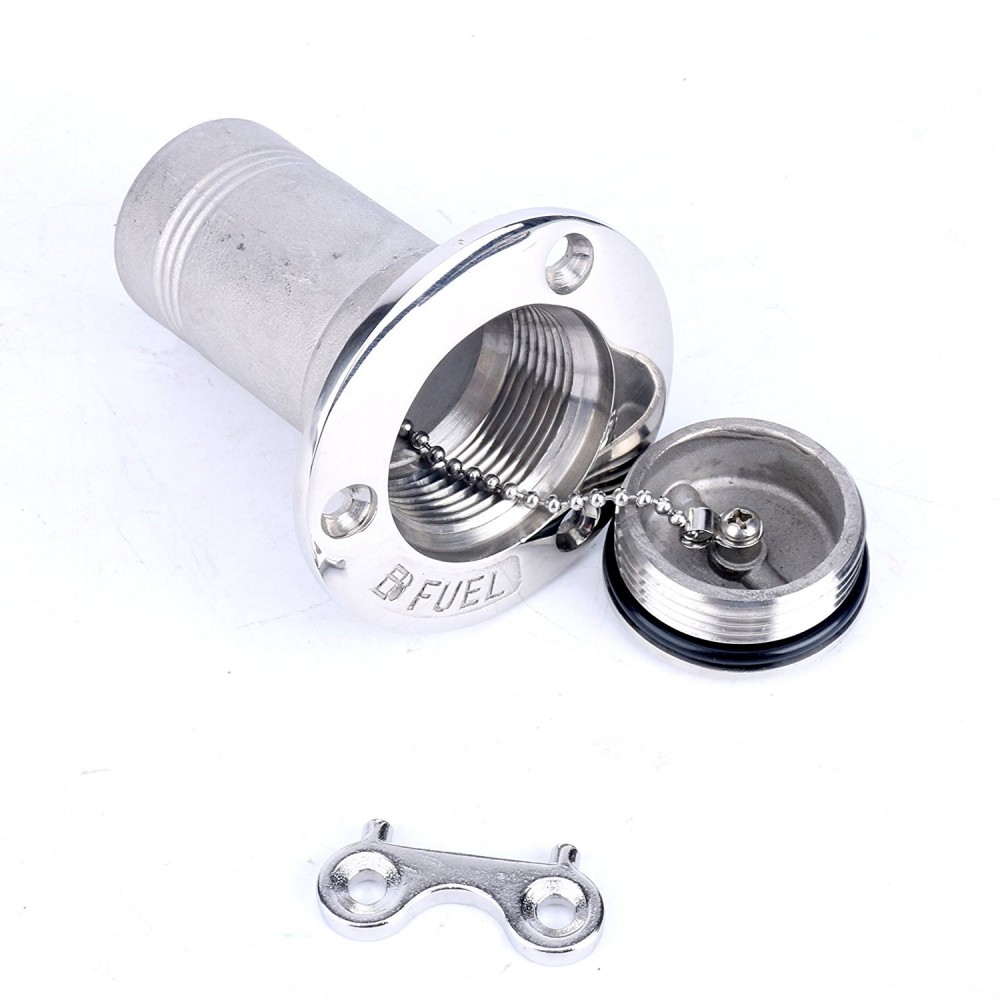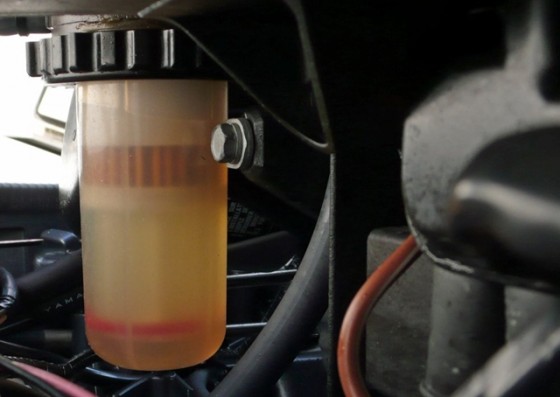How To Keep Water Out Of Gas In A Boat
H2o Bug in Gunkhole Fuel: Sponsored By Sea Tow
Sooner or later, chances are that you lot're going to have water in your fuel. Here are steps that will help foreclose or at to the lowest degree delay the problem, and manage information technology when the time comes.
We're boaters, and so presumably we take at to the lowest degree some honey for water. That's all well and adept, but when h2o gets into your fuel, either gas or diesel, information technology can really examination that love. And the fact is, if you spend enough time in boats, you will take to bargain with water in your fuel. Follow along as we walk you through the steps yous need to accept to make certain your days on the h2o end on a happy note—and not hooked to the line of a tow boat.

Sometimes a leak can be caused by a uncomplicated thing like a damaged O-band on a deck fill cap.
Where'southward the water coming from?
Water in fuel can come from a variety of sources. Some of these might be obvious, like a broken O-band on a deck make full cap. Other sources might exist harder to notice, similar a tank vent improperly placed past the boatbuilder. In my experience a vent that'due south located amidships is vulnerable to bow moving ridge exposure depending on boat speed and its height above the static waterline. Vent openings are also sometimes set facing forward, creating a strong possibility of picking up water coming off a bow wave at tedious speed. Alternatively, a tank vent mounted on the topsides just forwards of the transom with the opening facing downwardly is probable to stay dry in only well-nigh any bounding main condition.
Condensation can be another source of water in your tank, a situation made worse past ethanol added to marine fuel.
Use a fuel stabilizer recommended by your engine manufacturer (Mercury Marine, for case makes their own branded stabilizer) and don't get out your tank for also long without a full load of fuel; endeavor to proceed it topped up. Doing this minimizes space inside the tank for condensate to build up and ultimately end up in your fuel organization.
But be advised—your fuel tank is but ane in a series of tanks that bring fuel to your engine. There are likewise large-scale distributors, delivery trucks, and marina fuel stations, all of which use tanks that are subject to condensation, and you may face a cumulative collection of water from all those links in the supply concatenation.

This Moeller Clear-Site water separator and filter allows you lot to see any water settled into the bottom of the clear plastic fuel basin, and has a big opening valve to drain the water out. However, depending on the boat and fuel system arrangement, such filters may not be compliant with USCG or ABYC standards.
OK, h2o happens. How do I go on it from causing trouble?
H2o-separating fuel filters are the key to success here. I'm a big fan of the clear-bowl kind that allow you to see and drain out water settled at the bottom. That said, some circumspection is advised. Both the U.South. Coast Guard (USCG) and American Gunkhole and Yacht Council (ABYC) mandate that all components used in gasoline fuel systems pass a fire test and meet some other strict requirements. Yet, ABYC standards are much tougher to comply with than USCG minimum requirements. All of this tin be disruptive, but equally a general rule of thumb, ABYC standards say that h2o separator/filters with clear plastic bowls for gasoline engines are acceptable for open-cockpit boats, but should not be installed belowdecks in boats with enclosed engine or tank spaces where a volatile fuel/air mixture can accrue in the consequence of a fuel leak. In most cases, to come across all the requirements for both the USCG and the ABYC in those circumstances you lot will need to use all-metal water separator/filters and do without the convenient see-through plastic bowls.
How often should I modify my filters?
At the minimum, follow your engine manufacturer's recommendations. I typically put between 50 and 150 hours per year on my gunkhole, and I change my filter every leap earlier starting my engine for the first time. And I always keep a spare filter on board in example the worse happens and I demand to change out offshore.
Remember that most outboards today will have a small secondary filter mounted on the powerhead. It volition accept a clear bowl and then you tin run across if any water has settled to the bottom. Be extra vigilant and bank check this filter for water a few times during the season. In fact, some manufacturers take a sensor integrated into this setup that volition alarm you if water reaches a level too high in the basin. Change this filter chemical element at least every ii years, or according to your engine-maker's recommendations.

An engine-side canister with a filter and a water sump is the last line of defense earlier h2o works its way into the engine.
What near diesels?
As far as diesels go, the aforementioned basic rules apply but one boosted particular should be mentioned. Filters are rated to stop particles of a certain size, typically measured in microns. One micron is equivalent to .00004". If the diesel engine manufacturer says to utilize a 10-micron filter stick to that specification. Some people have thought that if 10 is good, a v-micron element might be better. No! Information technology is really possible to create a situation where the filter is too fine and volition restrict fuel flow, causing a fuel starvation condition with your engine.
The best strategy for minimizing the run a risk of h2o in your fuel is to purchase your fuel from a place that sells a lot of fuel. This helps to ensure that the fuel is fresh, and that it hasn't been sitting around in a storage tank for an extended period, collecting condensed water. Follow the recommendations relative to fuel filters, and you can enjoy the water on the outside of your boat—non suffer from water inside your fuel tank.
Editor'due south Note: Promotional consideration for this article was provided by Body of water Tow.
Source: https://www.boats.com/how-to/water-problems-in-boat-fuel/
Posted by: frankdockly.blogspot.com


0 Response to "How To Keep Water Out Of Gas In A Boat"
Post a Comment